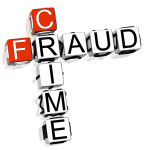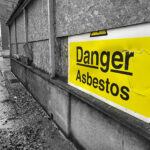A preliminary study of an asbestos-plagued Montana town indicates health dangers remain in some areas already addressed in a federal cleanup that, so far, has cost more than $370 million.
Tuesday’s release of a long-awaited draft toxicity study for the town of Libby comes more than a decade after the Environmental Protection Agency started its cleanup operation.
Health workers say more than 400 people have been killed over the last several decades in Libby, which is considered the nation’s deadliest Superfund site. Asbestos fibers released from a nearby W.R. Grace vermiculite mine once blanketed the town of about 3,000 people.
EPA officials said Tuesday’s study confirms Libby’s once-deadly ambient air is now safe.
Yet they conceded some homes already addressed by cleanup crews remain a risk and might need to be revisited. Officials suspect those areas have been re-contaminated by homeowners who inadvertently tracked in asbestos from areas not addressed by cleanup crews.
EPA assistant administrator Paul Anastas said the toxicity study was released early to keep residents “fully informed” in Libby and neighboring Troy. The agency has faced withering criticism from Montana officials for past missteps in Libby, including false declarations that areas were safe when in reality significant risks remained.
“This is a major step forward in establishing the science to improve the cleanup of asbestos in Libby and the protection of the families that live here,” Anastas said.
The study suggests the cancer risk from Libby’s asbestos is relatively similar to the dangers posed by other types of asbestos, EPA officials said. That runs counter to prior assertions by scientists that Libby’s unique strain of the mineral was hundreds of times more toxic than asbestos found elsewhere.
Yet the study also contained troubling revelations about non-cancer health risks, showing people can be sickened by inhaling even the slightest trace of the fibers. Commercial landscapers or others who work extensively in yards are at particular risk, the study indicated.
The vermiculite that came from W.R. Grace’s Libby mine was shipped around the country for decades and sold as residential insulation under the brand name Zonolite. Tens of millions of homes contain the material, but EPA officials said Tuesday they do not believe any cleanup actions are necessary outside of Libby and Troy, where the material was widely used in gardens, homes and as backfill.
To decrease the potential for recontamination, EPA officials say they plan to begin cleaning alleys between houses and entire neighborhoods instead of individual houses. Also, they plan to pursue a “curb to curb” approach that will no longer make exceptions for homeowners who want parts of their yards left intact.
Libby Mayor Doug Roll said the changes made sense, but will work only if agreed to by property owners who in the past refused the EPA access.
“If you clean all the way around a property that’s contaminated, there’s a big issue with cross-contamination,” Roll said. “I know I’m a little reluctant to let them onto my property, too, after seeing some of the cleanups that have been done.”
U.S. Sen. Max Baucus, a Montana Democrat, said the town was depending on the EPA to get the job done right.
“Our kids, grandkids and the economy cannot keep waiting for a clean bill of health,” he said. “As history has proven, we’ve got to stay vigilant, keep holding authorities accountable and demand the best possible future for Libby and the folks of Lincoln County.”
In 2009, EPA administrator Lisa Jackson declared a public health emergency in Libby -the first of its kind under the federal Superfund law that guides the cleanup of contaminated sites.
Approximately 1,500 people who have lived or worked in Libby are being treated for asbestos-related diseases through a local clinic, the Center for Asbestos Related Diseases. Those illnesses can lead to decreased lung function and the disease asbestosis.
Over the last decade, federal contractors have removed contaminated soils and insulation from more than 1,400 homes and businesses in the Libby area.
Another 150 homes are slated for cleanup this summer. That would leave about 200 properties remaining in the federal cleanup plan. Officials say they have been denied access to an additional 600 sites that could be contaminated.
Was this article valuable?
Here are more articles you may enjoy.

 Beyond the Claim: How Social Canvassing is Transforming Insurance Fraud Detection
Beyond the Claim: How Social Canvassing is Transforming Insurance Fraud Detection  EVs Head for Junkyard as Mechanic Shortage Inflates Repair Costs
EVs Head for Junkyard as Mechanic Shortage Inflates Repair Costs  Poll: Consumers OK with AI in P/C Insurance, but Not So Much for Claims and Underwriting
Poll: Consumers OK with AI in P/C Insurance, but Not So Much for Claims and Underwriting  BNSF Says It Didn’t Know About Asbestos That’s Killed Hundreds in Montana Town
BNSF Says It Didn’t Know About Asbestos That’s Killed Hundreds in Montana Town 